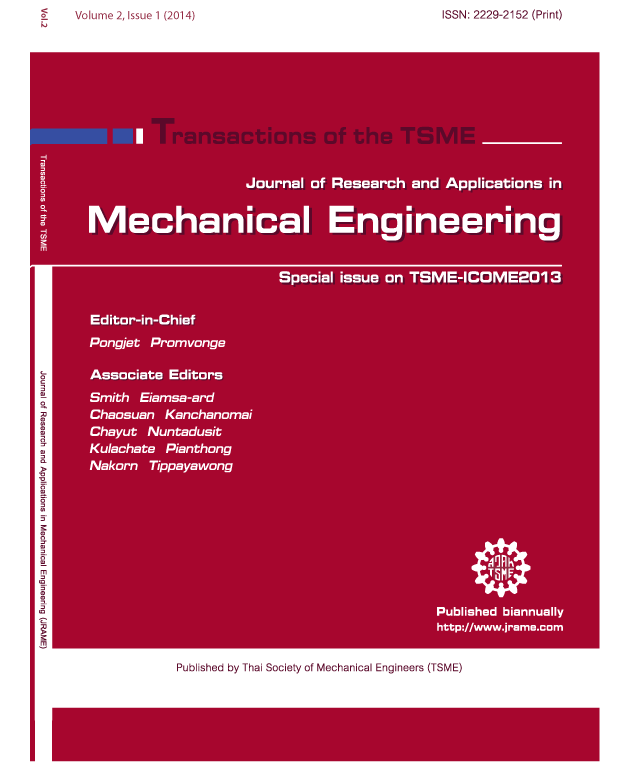Small billet forming of porous sintered copper sheet
Main Article Content
Abstract
This study aims at forming small billets on metal sheet which is fabricated as a porous blank by using powder metallurgy technique. Pure copper disc was fabricated in 50% porosity and used as specimen for small billet forming. Thickness of the sintered specimen is 2~3mm and small billet was extruded into die cavity by punch indentation at extrusion ratio 4. Diameter of the die is 1.0mm. As the results, In the case of same punch force, a billet height of porous specimen became longer than conventional pure copper. When specimens were extruded at the same punch stroke, porous specimen showed little shorter billet height than the conventional one due to occurrence of shrinkage, but its punch force became 33% lower. Billet height became more longer in case of thicker sintered specimen. It is concluded that the porous specimens is useful to forming a small or micro billet with lower punch force.
Article Details
This work is licensed under a Creative Commons Attribution-NonCommercial-ShareAlike 4.0 International License.
References
Mechanical Engineers, Series C, Vol. 73(728), 2007, pp. 1253-1258. (in Japanese)
[2] Geier, M., Kleiner, M., Eckstein, R., Tiesler, N. and Engel, U. Microforming, Annals of the CIRP, 50/2, pp.
445-462, 2001.
[3] Hakamada, M. and Mabuchi, M. Fabrication by spacer method and evaluation of porous metals, Journal of
The Japan Institute of Light Metals, Vol. 62(8), 2012, pp. 313-321. (in Japanese)
[4] Taniguchi, Y., Ozaki, M., Kodama, K. and Nakajima, K. Suggestion of simplified powder metallurgy method
for engineering education, paper presented in 6th International Symposium on Advances in Technology
Education 2012, Kitakyushu, Japan, 2012.
[5] LUSAS, Theory Manual, Vol. 1, LUSAS Version 14.5, No. 1, pp. 175-181.
[6] Khoei, A.R. Numerical simulation of powder compaction processes using an inelastic finite element analysis,
Material and Design, Vol. 23, 2002, pp. 526-529.
[7] Tszeng, T.C. and Wu, W.T. A study of the coefficients in yield functions modeling metal powder
deformation, Acta Materialia, Vol. 44(9), 1995, pp. 3543-3552.



